Hardware Preprocessing Settings
Hardware preprocessing settings include mean filtering and range checking.
Mean Filtering
Mean filtering optimizes the point cloud through filtering, patching, and deburring operations.
The settings interface for mean filtering is shown in Figure 1:
Mean filtering offers four modes, as shown in Figure 2:
The modes Weak, Normal, and Strong include three sets of preset parameters. The Custom mode allows for manual parameter settings, as shown in Figure 3:
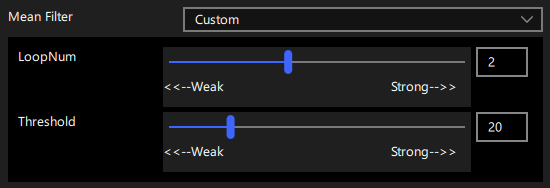
It includes two parameters:
- Loop Number
The more the loop number, the more pronounced the smoothing effect. Increasing the loop number can enhance repeatability precision.
The range for this parameter is 0 to 5. When the loop number is 0, the feature is turned off.
(Software default presets: Weak-1, Normal-2, Strong-4)
- Threshold
The threshold is a recognition threshold for height differences. The larger the threshold, the stronger the filtering effect.
Filtering will alter the surface contour of the point cloud to some extent; the greater the loop number, the more significant the alteration.
(Software default presets: Weak-10, Normal-20, Strong-40)
Range Check
Users can set maximum and minimum values for X, Y, and Z to mark points exceeding these ranges as invalid. This is useful for filtering out backgrounds, fixtures, areas of disinterest, and stubborn burrs that are difficult to remove. This feature is part of the hardware processing, so it does not add to the software processing time.
The range check settings interface is shown in Figure 4:
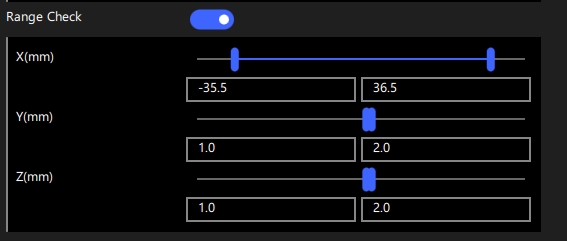
Example:
Original data is shown in Figure 5:
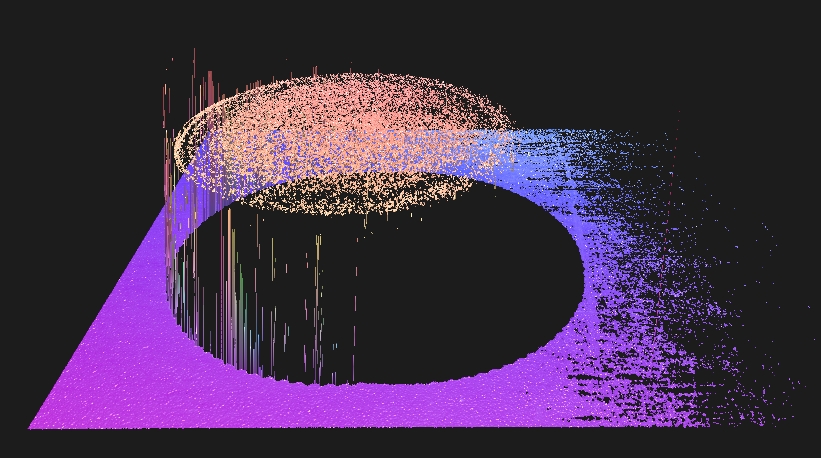
From the original data, some burrs can be observed. These can be removed by setting Zmin and Zmax through range checking.
First, obtain a rough range of valid point heights by enabling the pickable option in 3D display or switching to 2D display, then moving the mouse over the image to gather current point information.
The object's height from the original data is around 6.3, with the lower plane height around -7, thus setting the range check zmin~zmax range to -9 ~ 7, as shown in Figure 6:
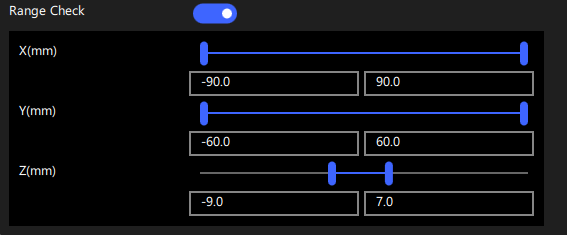
After re-capturing, the range check processing effect is shown below:
 | 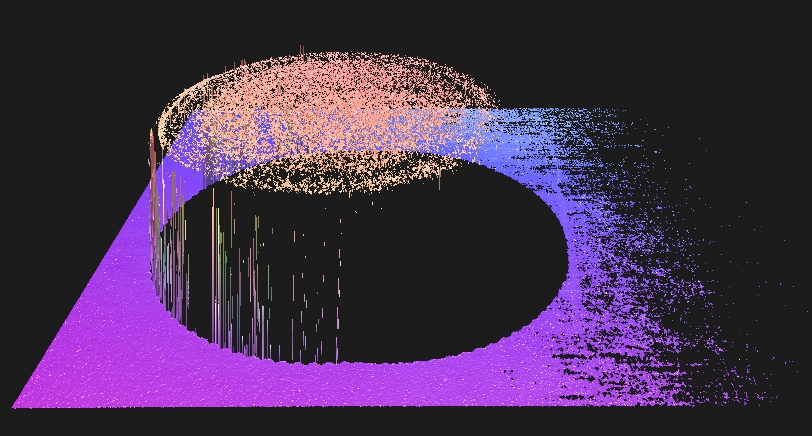 |
|---|---|
| Figure 6: Before Range Check | Figure 7: After Range Check |